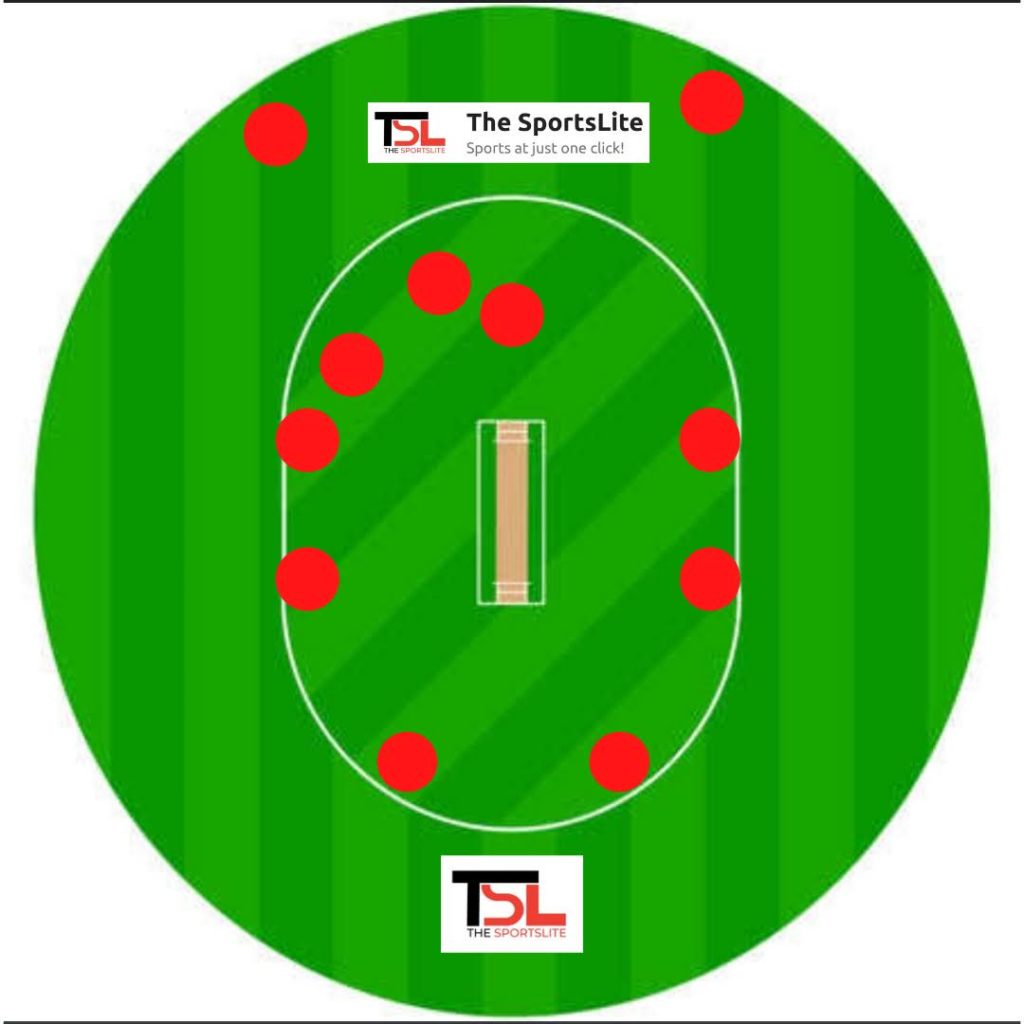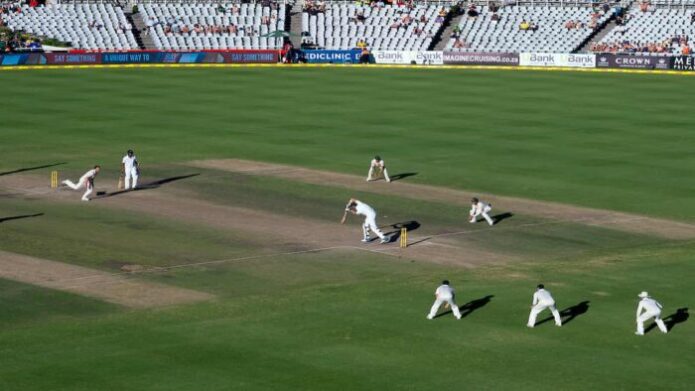Cricket and Bollywood are the two most loved things in India. But cricket is religiously followed and cricketers don’t have fans, instead, they have devotees. The result of which is often seen during the IPL’s media rights sale. With another IPL media rights auction on the cards, BCCI is expected to receive a huge surge in the rights’ value. So, it is clear how much we, the Indians, love cricket. But often a lot of fans feel confused when they hear the names of different fielding positions in cricket. So to clear all the doubts, we will be discussing the 11 basic cricket fielding positions.
11 Cricket Fielding Positions

1) Wicket-keeper
A wicket-keeper is probably the most important member of the fielding group. He stands behind the stumps and is responsible for getting hold of a majority of the balls in an innings. A keeper is usually the busiest fielder on the ground. Apart from just keeping the stumps, a keeper also plays an important role in the leadership group. He has a better understanding of the field placements and is the best person to take a call on whether to go for an LBW review or not.
2) Slips
A slip fielder stands beside the keeper and is usually in action whenever the bowler is getting assistance from the pitch. As per the on-field tactics of the captain, a slip fielder may stand on the off side or the leg side of the batsman. Slip fielders are more prominently seen in test cricket. A team can plot as many as four fielders in the slip cordon.
Slip fielding is all about a fielder’s reflexes and hand-eye coordination. Fielders with soft hands receive a fair amount of success in the slip cordon. Rahul Dravid, Ajinkya Rahane, and VVS Laxman were some of the best Indian slip fielders.
3) Third Man
A third man is a fielder who stands behind the wicket-keeper on the off side. As per the requirement, a third man might be placed on the boundary or inside the thirty-yard circle. We often see fast bowlers or one of the weakest fielders in the team fielding at this position. The only reason behind it is that the workload is often less at this position. A fast bowler who is in a spell is often placed there to regain some energy before coming in to bowl the next over.
Also Read: IPL Mega Auction 2022: 5 Batsmen Who Will Be Targeted By Every Team
4) Gully
Gully is an important catching position. He stands between the point and the fourth slip inside the inner circle. Gully usually comes into the action when a batsman goes for a flashy cover drive but gets a thick outside edge. Since the batsman went for a shot, the ball accelerates off the edge. Thus, the fielder at gully needs to have good reflexes in order to catch the ball.
5) Point
A point fielder stands square of the wicket, on the off side. He often stands right on the inner circle if a fast bowler is bowling. For a slower bowler, he might come a little forward. Usually, the best fielder in the team stands at point. That is why we see Ravindra Jadeja fielding at point a lot of time for India and CSK. Whenever a batter aggressively cuts a short ball, there stands a high probability that the ball will travel through the point region. Thus the fielder needs to be highly athletic to get hold of the quickly-moving ball.
6) Cover
A cover fielder stands somewhere along an imaginary line coinciding with the popping crease at the bowler’s end on the off side. A bowler, especially a spinner, invites the batsman to hit a cover drive. If they successfully deceive the batsman, an outside edge might be induced; Else a beautiful cover drive will be hit. In case the drive’s hit, the cover fielder comes into action. He is responsible for stopping the ball from racing away to the boundary or attempting a catch if the ball has been hit in the air at a catch-able height.
7) Mid off
The fielder at mid off stands a bit wider than exactly straight on the off side. He is often there on the fast bowler’s left who is about to start his run-up. A batsman’s straight drive isn’t always as straight as an arrow. If he hits it slightly on the off side, then the fielder at mid off is responsible for stopping the ball. Mid off is many a time, seen chasing a batsman’s off drive which travels through the gap between mid-off and cover.
Also Read: IPL Mega Auction 2022: 5 Bowlers Who Will Be Targeted By Every Team
8) Mid on
Mid on is the same as mid off; But on the leg side. He is there on the fast bowler’s right who is about to start his run-up. Straight drives, played slightly towards the leg side and the on-drives are the two prominent shots played towards the mid on fielder. As per requirement, he may stand closer to the inner circle or farther away from it.
9) Mid-Wicket
Mid-wicket is a catching position on the leg side. He stands somewhere along an imaginary line coinciding with the popping crease at the bowler’s end, just like the cover. A flick shot attempted off a spinner generally travels towards the mid-wicket. At times, a batsman may pull a short ball towards him and thus he should have the instincts to react at the right time. Batsmen in the death overs usually slog in deep mid-wicket’s direction, thus he has to be very active whenever he is placed on the boundary.
10) Square Leg
Square leg, as the name suggests, stands square of the wicket on the leg side. Sweep shot is a very common shot played towards the square leg (though it is intended to be hit finer). Depending on the batsman’s placement, a pull or a flick, both shots can be played in the square leg’s direction. Square leg does not demand the team’s best fielder to be placed there as it is not a predominant catching position.
11) Fine Leg
Fine leg is the last of the 11 cricket fielding positions. Just like third man, fine leg is the fielding position where a fast bowler or a weak fielder is placed. The captain can decide whether the fine leg needs to be brought inside the thirty-yard circle or should be right on the boundary. Fine leg and square leg are generally placed to protect boundaries off a poor delivery bowled on a batsman’s legs.
Also Read: 10 Players With Most Runs In Test Cricket History
With this, we bring this article to an end. We hope this would help our viewers understand the 11 cricket fielding positions better and enjoy their favorite game without hanging back.
Thank you for reading it. Leave us a comment if you liked it.
Do follow us on: Google News | Facebook | Instagram | Twitter | Youtube | LinkedIn
Have a good day ahead 🙂

